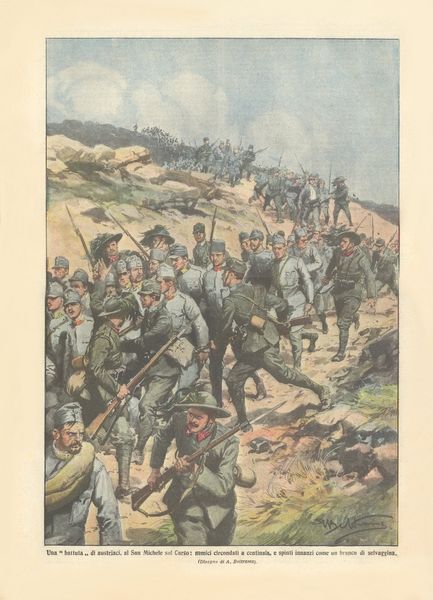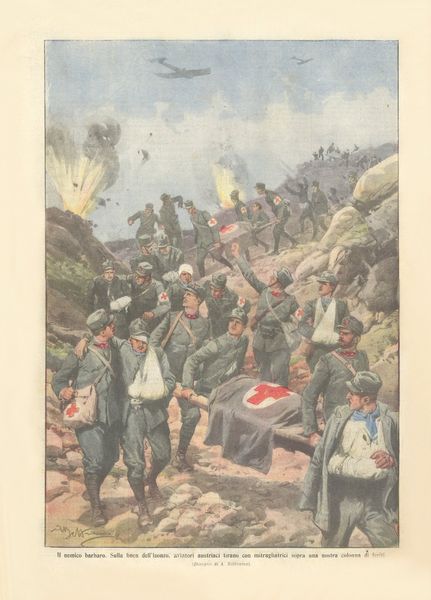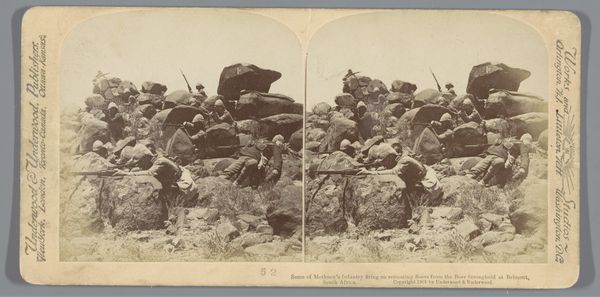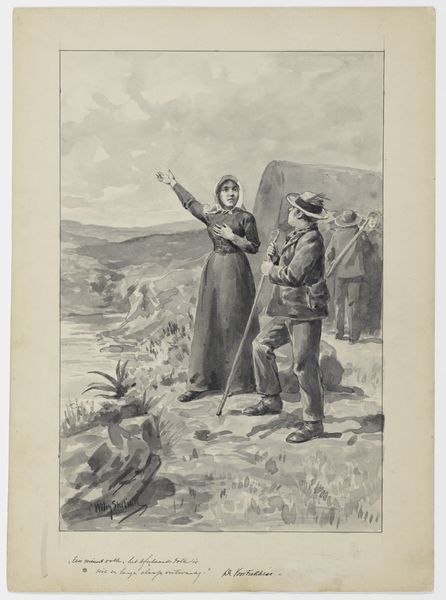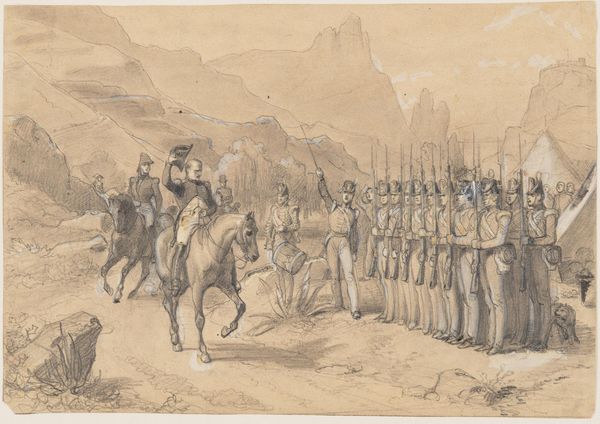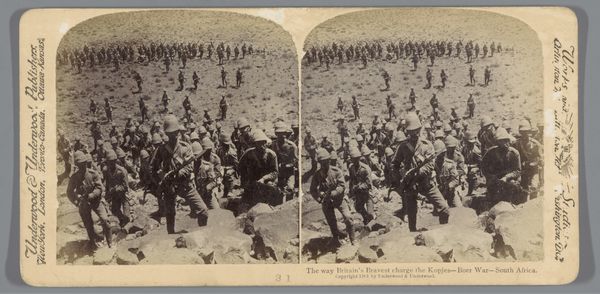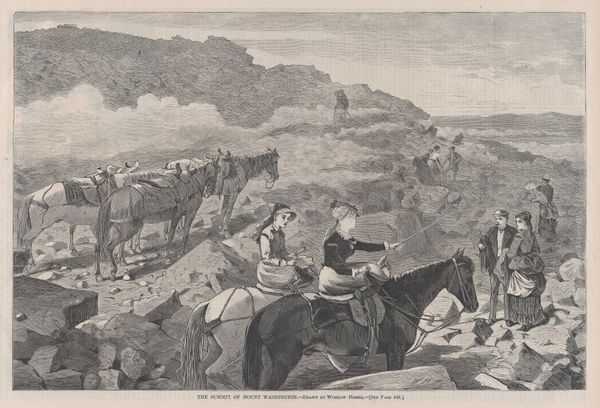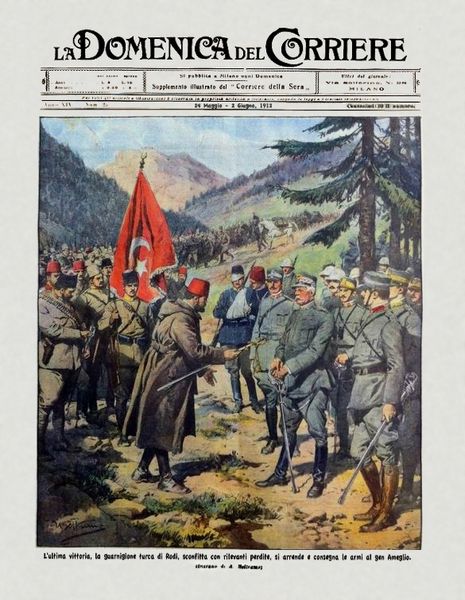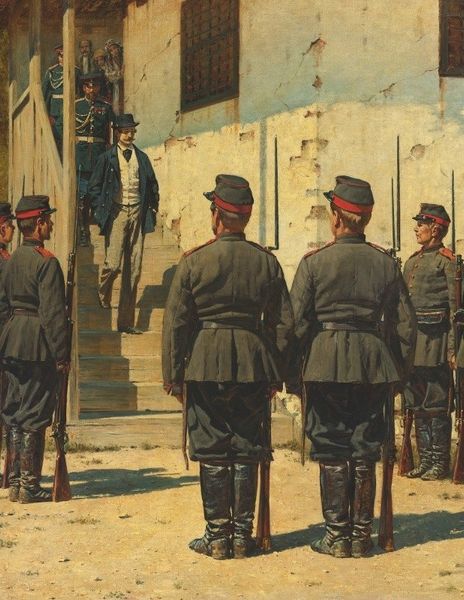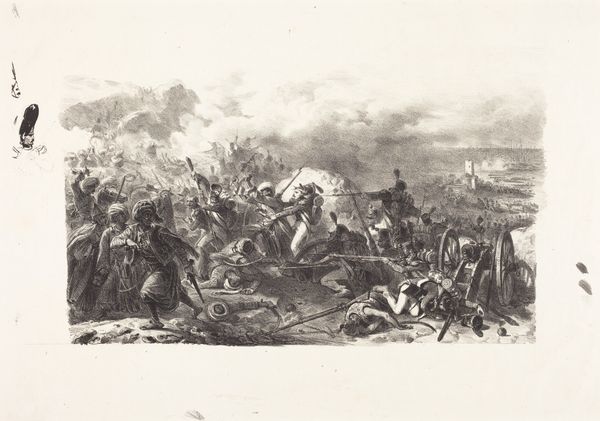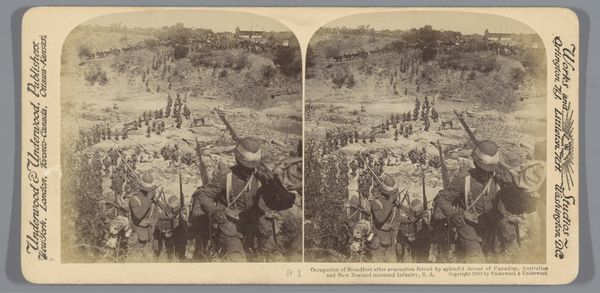
A Good Capture On The Black Mountain. The Command Of An Austrian Battalion Discovered In A Cave And Made Prisoner 1915
0:00
0:00
painting, print, watercolor
#
portrait
#
narrative-art
#
painting
# print
#
watercolor
#
watercolour illustration
#
genre-painting
#
history-painting
#
watercolor
Copyright: Public domain
Curator: Look at the scene unfolding here, it has an almost cinematic feel. Editor: It's surprisingly chaotic for a scene of surrender. A nervous energy permeates it, despite one group clearly being captured. Curator: Indeed. This watercolor illustration, by Achille Beltrame, is titled "A Good Capture On The Black Mountain. The Command Of An Austrian Battalion Discovered In A Cave And Made Prisoner". It's dated 1915, so created during the early years of the First World War. These narrative artworks depicting military events gained popularity in newspapers. Editor: That's useful context. Knowing that it’s tied to visual media shapes our understanding of the power structures in wartime and image consumption and control. I wonder how many Italians truly reflected upon these images. We need to consider whose story it tells and whose voices are marginalized. Curator: Exactly! Beltrame depicts a moment of apparent Italian triumph. There is a focus on their supposed bravery as the victors on Monte Nero in the Alps. Editor: The grey uniforms make them almost indistinguishable from the rocks, camouflaged in this harsh environment, as one group watches their cave hideout from a rock face that almost has an anthropomorphic form to me... Curator: An excellent observation, and it reminds me of similar cave-as-womb symbols in art from different eras. It could easily stand as a metaphor for the psychological dynamics of conquest and resistance here. But do the rocks offer the promise of shelter, and refuge, or simply act as prison? Editor: Well, looking at Beltrame's visual rhetoric through a postcolonial lens, the image appears less straightforwardly triumphant. Curator: You are right, the ambiguity of war as told by the artist must be fully acknowledged. Thank you for adding your important critical reading of this image. Editor: Thank you. History through art encourages a rich social understanding and reveals new dimensions for the study of modern conflicts.
Comments
No comments
Be the first to comment and join the conversation on the ultimate creative platform.
